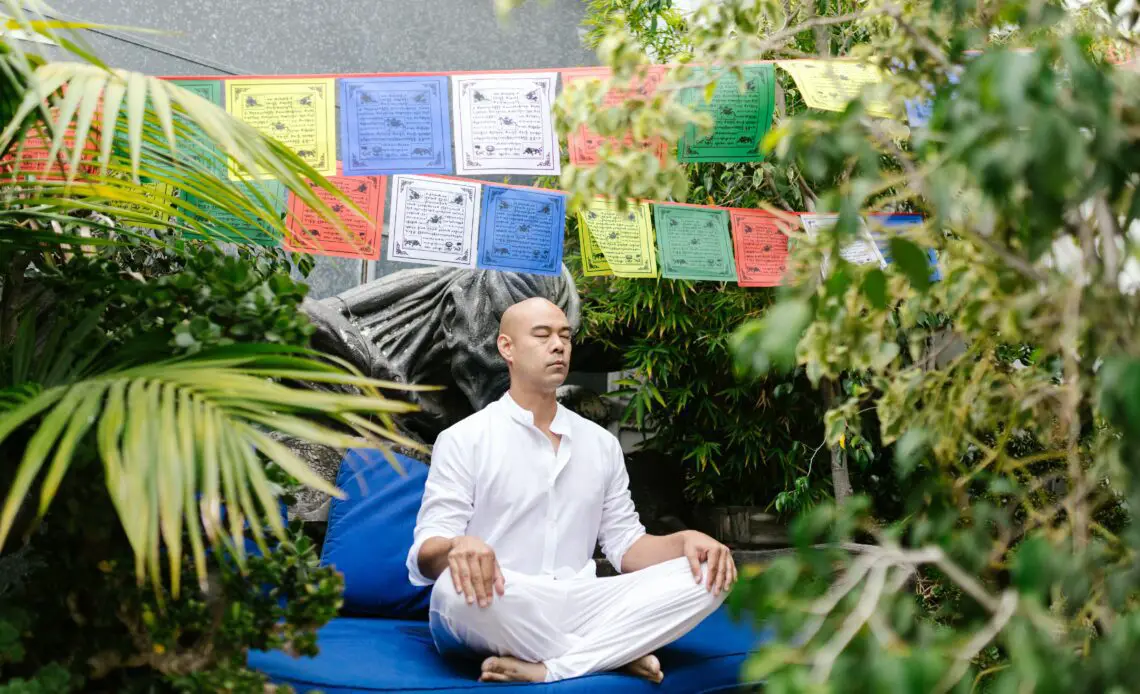
The archetypes are described as themes and images rooted in our collective unconscious. They possess ubiquitous meaning across cultures and appear in literature, dreams, art, and faith.
The most known archetypes are the Jungian archetypes proposed by Swiss psychiatrist and psychoanalyst Carl Jung. He believed these archetypes were inherited from our ancestors, affected our behavior, and influenced how we show ourselves to the world.
Knowing your archetypes is crucial as they reveal your emotional and biological urges. Also, they will help you know your truest desires and unlock your hidden potential.
The Collective Unconscious Theory and the Creation of the Archetypes
According to Kendra Cherry from VeryWell Mind, the Jungian archetypes were developed by Carl Jung when he and Sigmund Freud went on different paths after arguments on the factors that influence behavior and personality.
Jung publicly criticized Freud’s emphasis on the influence of biological factors, such as the libido in our behavior and personality, particularly Freud’s Oedipus Complex.
In 1913, Jung developed his version of the psychoanalytic theory, where he extended Freud’s idea of the personal unconscious and included the concept of the collective unconscious.
The Collective Unconscious Theory
Dr. Saul Mcleod from Simply Psychology expounded that, like Freud, Jung believed that the psyche is composed of the ego (reflects the conscious mind) and the personal unconscious (uniquely different for each individual and consists of concealed memories.)
However, Jung proposed that the unconscious can be divided into two layers: the personal and collective unconscious.
Contrary to the old belief that humans were born as a tabula rasa or blank slate, Jung suggested that we are not, as our collective unconscious contains shared memories and ideas.
Steven Gimbel from Wondrium Daily explained that the theory of the collective unconscious proposes that shared experiences link human beings together. These collective experiences are what we utilize to give meaning to the world.
On the other hand, Lisa Fritscher shared that the collective unconscious is also known as the objective psyche and came from the idea that a component of our deepest unconscious mind is developed inherently, not personally.
Furthermore, Jung proposes that the collective unconscious holds the archetypes— models that influence our experience. They are innate, unlearned, and universal.
The Four Major Archetypes of Carl Jung
According to Carl Jung, the archetypes are not fixed as they can overlap and manifest simultaneously, depending on the situation.
The archetypes are also flexible in number, but he gave particular attention to four: the persona, shadow, anima (or animus), and the self.
The Persona
Lisa Fritscher explained that the persona is the social mask we use to hide our true selves from the world. It masks the ego to protect its good image in the outside world.
According to Dr. Saul Macleod, Jung described the persona as the conformity archetype, which always considers the person’s public image.
The Shadow
The shadow archetype is the dark side of ourselves that we suppress. Kendra Cherry explained that the shadow contains personal attributes that we might find unacceptable based on personal principles and societal standards.
The Anima and Animus
According to Kendra Cherry, the anima and animus serve as a mirror of one’s biological sex. The anima is the female attribute of the male psyche, while the animus is of the female psyche.
The Self
Lastly, the self represents the whole psyche and comprises the previous archetypes. According to Carl Jung, the aim of the self is to attain self-hood.
The 12 Jungian Archetypes According to Mark and Pearson
According to Lily Yuan from Personality Psychology, the 12 Jungian archetypes we mostly know today were popularized by Margaret Mark and Carol Pearson in their book, The Hero and the Outlaw, published in 2002.
The two authors revamped the names of Carl Jung’s 12 archetypes into something that fits the taste of modern society. For instance, they revamped the child as the innocent.
Yuan added that the 12 archetypes are uniquely different and can overlap and interact with one another. They can also change and develop according to an individual’s personal growth.
The 12 Jungian Archetypes
| Archetypes | Cardinal Orientation | Strengths | Weaknesses |
|---|---|---|---|
The Ruler | Order | Responsibility, authority, and leadership. | Excessive actions, stiffness, conservatism, and superiority. |
The Creator | Order | Creativity, innovation, intuition, uniqueness, elegance, talent, and professionalism. | Aloofness and job stress. |
The Sage | Freedom | Wisdom, non-attachment, intelligence, and skepticism. | Zealotry and desire. |
The Innocent | Freedom | Sincerity, compassion, and kindness. | Rarely skilled, vulnerable, and naive. |
The Hero | Ego | Honor, courage, and endurance. | Overconfidence. |
The Explorer | Freedom | Sovereignty, passion, growth, and reputation. | Unfocused, roaming, and obsessiveness. |
The Wizard | Ego | Excessive actions, stiffness, conservatism, and superiority. | Dark sorcery, deception, and deceit. |
The Caregiver | Order | Compassion, kindness, and nurturing. | Acting as a hero, getting exploited, guilt-tripping, and rescuing compulsively. |
The Rebel | Ego | Humbleness, transmutation, and progress. | Both types of self-destruction include addiction issues, impulses, self, and other abuse. |
The Lover | Social | Passion, zeal, appreciation, and seductive enjoyment. | Attachment to partnerships, intimacy, and the fear of being ruined if a lover abandons you. |
The Everyman | Social | Funny, insightful, and disarming. | Can be superficial and despicable. |
The Jester | Social | Independence, laughter, being alive, and pleasure. | Overindulgence, sloth, whimsy, and spendthrift. |
The Importance of Finding Your Archetype
Archetypes are universal patterns deeply embedded in our collective subconscious. They consist of suppressed ideas, thoughts, and memories believed to be inherited and wired from our ancestors.
Arianna Pienaar explained that knowing your archetypes and how they affect your behavior will provide great insight into your emotional and biological notions.
They will reveal your desires and goals and help you determine the methods suitable for your personality and needs.
Most importantly, archetypes allow you to identify your strengths and weaknesses and ascertain how you can work to maintain and improve them.
It’s easy to determine your archetypes through various Jungian archetype tests you can find on the internet.
Wrapping It Up!
Carl Jung, a revolutionary Swiss psychiatrist and psychoanalyst, identified the Jungian archetypes through his version of the psychoanalytic theory.
According to him, the archetypes were a part of the collective unconscious., which contains shared experiences that link human beings together. These collective experiences are what we utilize to give meaning to the world.
Determining your archetype is essential to learning more about yourself and understanding your being. It is your key to deeper self-awareness and fulfillment.
Discover More About Spirituality
Guides
- 23 Best Spiritual Books to Enrich Your Soul
- Celtic Spirituality: A Quick Read
- Demons and Demonic Possessions: Everything You Need To Know
- Esoteric Spirituality: An Introduction
- Shinto Spirituality: Everything You Need To Know
- Spiritual Awakening: The Complete Guide
- Spiritual Caregiving: Your Complete Guide
- Spiritual Confusion: What It Is, Causes & How To Overcome It
- Spiritual Counseling: Everything You Need To Know
- Spiritual Death: Everything You Need To Know
- Spiritual Emptiness: 10 Signs & 11 Ways to Overcome It
- Spiritual Grounding: A Quick Guide
- Spiritual Health: A Comprehensive Guide
- Spiritual Illness: Everything You Need To Know
- Spiritual Meditation (A Guide to Strengthen Your Spirit)
- Spiritual Resilience: The Skill to Overcome Hardships
- The Divine Feminine (A Complete Insight and Ways to Unlock It)
- What Is Spirituality? Your Complete Guide
How To
- 12 Ways To Attain Spiritual Maturity
- 13 Ways to Spiritually Cleanse Yourself
- 7 Healthy Ways to Deal With Anger
- 9 Ways to Spiritually Connect With Nature (A Quick Read)
- How To Be Spiritually Minded (Your Complete Guide To Spiritual Mindedness)
- How to Become A Spiritual Person (23 Ways & 7 Signs)
- How To Build Your Meditation Garden (An Easy Guide)
- How To Connect With The Universe (Everything You Need To Know)
- How To Form A Deeper Connection With God
- How to Heal Your Sacral Chakra (A Quick Guide)
- How to Incorporate Anglican Spirituality In Your Life (A Quick Guide)
- How to Lead a Spiritual Life: 13 Steps and Benefits
- How to Raise a Spiritual Child (Complete Tips and Signs for Parents)
- How To Remove Someone From Your Life (Signs and Ways to Break Free from Toxic Relationships)
- How to Spiritually Attract Money (A Complete Guide)
Signs
Questions
- God Loves The Broken: How Does Spiritual Brokenness Bring Us Closer to God?
- How Are Spirituality and Science Related? The Two Hands of a Clock (A Quick Read)
- How Does Spirituality Affect The Lives of Millennials? (A Quick Read)
- What Does ‘I am with You in Spirit’ Mean? (Explained)
- What Is Agnosticism? (Explained)
